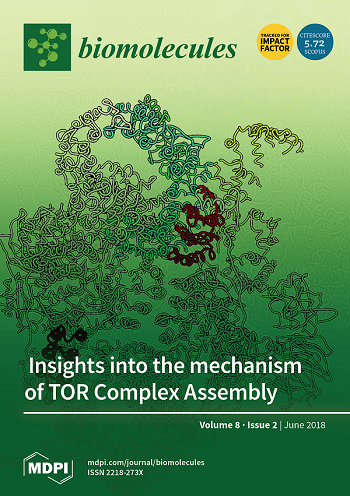Morphological and Biophysical Study of S100A9 Protein Fibrils by Atomic Force Microscopy Imaging and Nanomechanical Analysis
IF 4.8
2区 生物学
Q1 BIOCHEMISTRY & MOLECULAR BIOLOGY
引用次数: 0
Abstract
Atomic force microscopy (AFM) imaging enables the visualization of protein molecules with high resolution, providing insights into their shape, size, and surface topography. Here, we use AFM to study the aggregation process of protein S100A9 in physiological conditions, in the presence of calcium at a molar ratio 4Ca2+:S100A9. We find that S100A9 readily assembles into a worm-like fibril, with a period dimension along the fibril axis of 11.5 nm. The fibril’s chain length extends up to 136 periods after an incubation time of 144 h. At room temperature, the fibril’s bending stiffness was found to be 2.95×10−28 Nm2, indicating that the fibrils are relatively flexible. Additionally, the values obtained for the Young’s modulus (Ex=6.96×105 Pa and Ey=3.37×105 Pa) are four orders of magnitude lower than those typically reported for canonical amyloid fibrils. Our findings suggest that, under the investigated conditions, a distinct aggregation mechanism may be in place in the presence of calcium. Therefore, the findings reported here could have implications for the field of biomedicine, particularly with regard to Alzheimer’s disease.通过原子力显微镜成像和纳米力学分析对 S100A9 蛋白纤维的形态学和生物物理学研究
原子力显微镜(AFM)成像技术可实现蛋白质分子的高分辨率可视化,让人们深入了解蛋白质分子的形状、大小和表面形貌。在这里,我们利用原子力显微镜研究了蛋白质 S100A9 在生理条件下,以 4Ca2+:S100A9 的摩尔比在钙存在下的聚集过程。我们发现 S100A9 很容易聚集成蠕虫状纤维,沿纤维轴的周期尺寸为 11.5 nm。室温下,纤丝的弯曲刚度为 2.95×10-28 Nm2,表明纤丝具有相对的柔韧性。此外,获得的杨氏模量值(Ex=6.96×105 Pa 和 Ey=3.37×105 Pa)比通常报道的典型淀粉样纤维的杨氏模量值低四个数量级。我们的研究结果表明,在所研究的条件下,钙的存在可能是一种独特的聚集机制。因此,本文报告的研究结果可能会对生物医学领域,尤其是阿尔茨海默病领域产生影响。
本文章由计算机程序翻译,如有差异,请以英文原文为准。
求助全文
约1分钟内获得全文
求助全文
来源期刊

Biomolecules
Biochemistry, Genetics and Molecular Biology-Molecular Biology
CiteScore
9.40
自引率
3.60%
发文量
1640
审稿时长
18.28 days
期刊介绍:
Biomolecules (ISSN 2218-273X) is an international, peer-reviewed open access journal focusing on biogenic substances and their biological functions, structures, interactions with other molecules, and their microenvironment as well as biological systems. Biomolecules publishes reviews, regular research papers and short communications. Our aim is to encourage scientists to publish their experimental and theoretical results in as much detail as possible. There is no restriction on the length of the papers. The full experimental details must be provided so that the results can be reproduced.
 求助内容:
求助内容: 应助结果提醒方式:
应助结果提醒方式:


